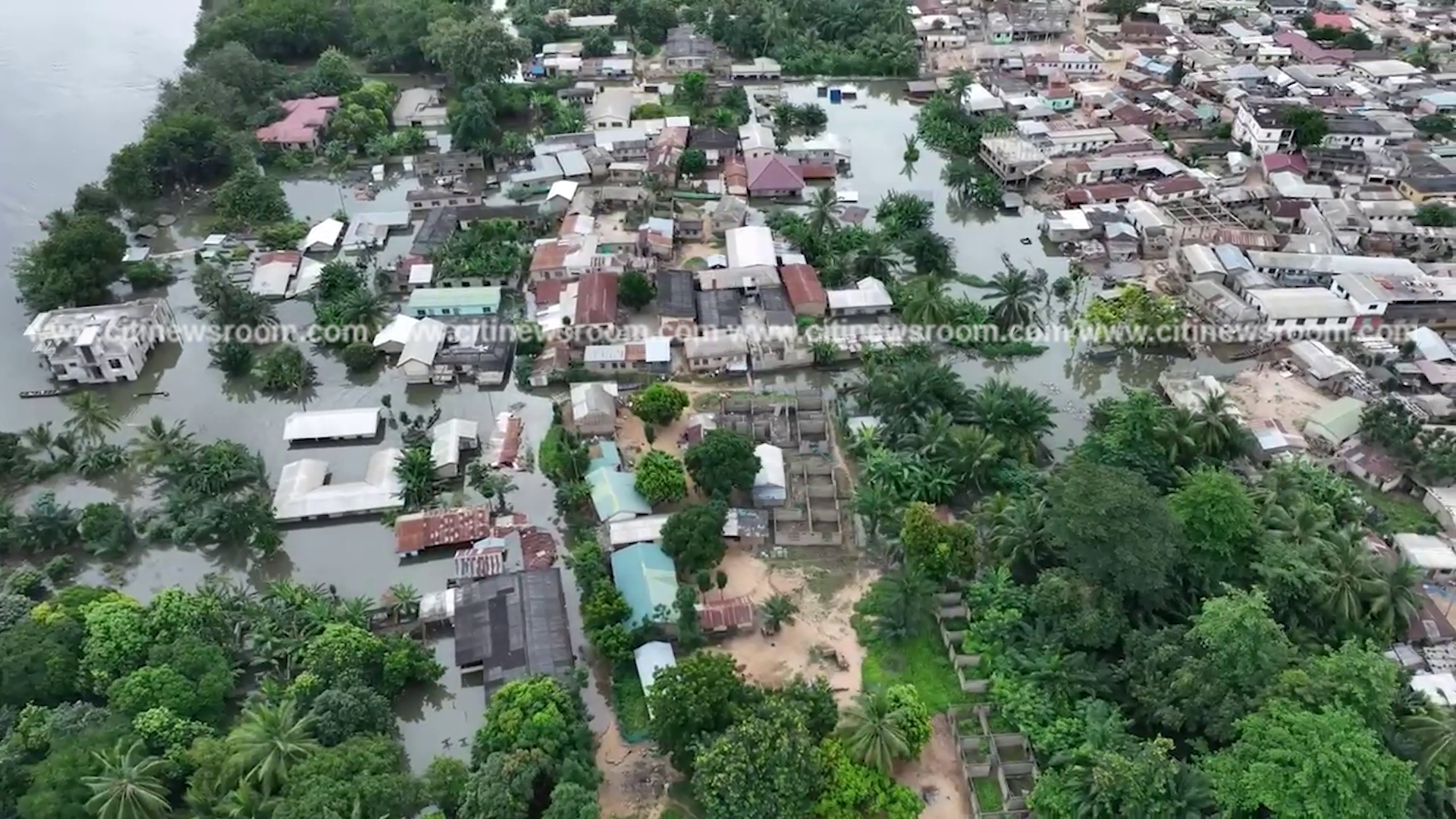- by Edna
- November 9, 2023
Click the link below to join Our WhatsApp group for daily brief on current trends in the country.
Join Here!
Loading

The recent catastrophic floods that have devastated parts of the Volta, Eastern, and Greater Accra regions, compounded by the overflow of the Akosombo Dam, have stirred a remarkable sense of unity and community spirit among Ghanaians. In these trying times, many individuals and corporate entities have extended their helping hands to support the flood victims, demonstrating an admirable solidarity.
The prompt and wholehearted support from these entities has been instrumental in alleviating the crisis. Regrettably, the official response, initially led by NADMO and later by a 13-member interministerial committee, has left much to be desired.
The government's handling of this multi-district disaster can be described, to put it mildly, as chaotic and disorganized. Considering the government's effective management of the COVID-19 pandemic, it was natural for Ghanaians to expect better from this government.
Particularly disappointing is the government's seemingly apathetic approach to the flood disaster, which has disproportionately affected the Volta Region. In stark contrast to the admirable management of the COVID-19 pandemic, the government's response to the flood crisis has been one of reactionary indifference which has since sparked anti-ethnic sentiments.
The government's response, when compared to its reaction to the Apiate Explosion, lends credence to the anti-ethnic politics the opposition NDC is being blamed for promoting in the Volta Region. While we do not subscribe to tribal politics in any form, unfortunately, the lackadaisical approach to attending to the flood victims appears to convict the government.
After nearly two weeks of flooding, the government established an inter-ministerial committee, albeit reluctantly. This committee, chaired by the Chief of Staff, was created to coordinate the government's response to the crisis. The committee has not since its announcement disclosed its response plan and what it is doing daily to realize its mandate. They are simply mute. It would have been better if they were not announced, to save citizens the stunt.
The 13-member interministerial committee exists merely in name because we don't hear anything about what they are doing to coordinate the government's responses to the disaster. A sad happening with the committee is that the substantive ministers have delegated their roles on the committee to their deputies. At least we know that the Ministers for Information and Energy, have ceded their seat on the committee to their deputies. That speaks volumes and explains why the committee is comatose, existing only in name.
It was only on October 24, 2023, that the government finally launched an emergency call number for flood victims to seek support. This initiative came over three weeks into the disaster, during which people lost their homes, saw their drinking water contaminated, and entire communities were left in darkness. This delay obviously raises concerns about commitment, equal treatment, and care.
The government's failure to take the lead in providing relief to the flood victims has given rise to two significant issues. Firstly, it has reinforced the perception of potential regional bias, casting doubt on whether the government prioritizes the welfare of the people in the Volta region. Secondly, it has led to the chaotic distribution of relief items to the disadvantaged, aged, children, and people living with disabilities.
Security analyst, Colonel Festus Aboagye (Rtd), in his analysis of the situation on TV3's Key Points, noted that the government's response was late and described it as "uncoordinated." He expressed concern about the government's seeming unpreparedness for the disaster. Colonel Aboagye also warned that the uncoordinated distribution of aid could render the relief efforts ineffective and hinder some victims from accessing aid, while others may receive aid multiple times. Why should this be the case?
The Way Forward:
To navigate through this crisis and ensure a more effective and coordinated response, the government should consider the following measures:
a. Daily Updates and Briefings: The government must commence daily briefings or regular updates to keep the public informed about developments in the affected areas and how it is responding to the needs of the people.
b. Long-Term Recovery Strategy: The government should articulate a comprehensive medium to long-term strategy for restoring the livelihoods of flood victims. This should encompass infrastructure rehabilitation, economic recovery, and community resettlement plans.
c. Transparency in Resource Allocation: The government, along with the Ministry of Agriculture and Volta River Authority, should specify how the USD 40 million and GHc 20 million respectively will be applied to restore the livelihoods of the people. As it stands, there is no clarity and it is not good enough.
d. Coordinate private and corporate efforts to provide accommodation to victims: The efforts of organizations such as the First Sky Group, Dzata Cement, and Citi FM/Citi TV to construct housing units for affected people at Mepe and other affected communities are commendable. However, these initiatives should be integrated into a comprehensive strategy for resettling affected populations, minimizing the risk of citing those much-needed settlements in flood-prone zones, among others.
Addressing this disaster and providing effective relief requires a well-coordinated, transparent, and efficient response from all stakeholders. The government, with its resources and leadership, must play a central role in this process, demonstrating its commitment to the welfare of all citizens and regions.
This is an opportunity to not only alleviate the present conditions of the flood victims, but also to build resilience and safeguard the future well-being of the community.

Click the link below to join Our WhatsApp group for daily brief on current trends in the country.
Join Here!
0 Comments: